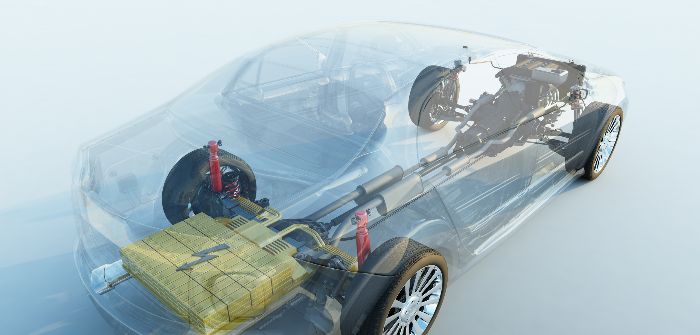Cooling and heating system components in EVs must be tested under different pressure levels and temperatures. Both the performance and power consumption of these systems must be tested to ensure they do not significantly reduce a vehicle’s range.
Climate control systems must be able to withstand extreme load changes. Instead of testing the load bearing capacity in proprietary test setups or in real operation, manufacturers can now analyze components using the special pressure cycling and functional test benches from Poppe + Potthoff Maschinenbau.
In a typical test, the component is inserted into the test chamber of the pressure cycling bench. This could be a complete auxiliary heater or components such as valves, hoses and other hollow bodies, which must be able to withstand more than 100,000 load changes over the lifetime of a vehicle (up to 15 years).
The test medium is a water-glycol mixture or pure glycol (for example, Glysantin G40, G44, G48). A cooling circuit is typically tested in temperatures from -40°C to +20°C while a heating circuit is tested in temperatures from +20°C to +140°C.
A specially developed closed test circuit uses pressure to prevent the formation of alcoholic vapors (which creates a risk of explosion). A system can also be analyzed in a climate chamber.
The flow rate of the test medium can vary from 1l/min to 50l/min at a pressure of 0.2 bar to 12 bar or higher. The load changes are freely programmable with sinusoidal or trapezoidal rise at a test frequency of 0.2Hz to 2Hz or faster.
The test stand can be used for complete systems, assemblies and components made of various plastics, metals and sealants. This enables products made of new materials to be validated.
Weak points in the material combination – for example around a weld seam – can be sounded out and can be optimized early in the development process as well as during production.
Energy efficiency in battery operation
In addition, Poppe + Potthoff Maschinenbau offers a functional test bench for electrical appliances such as cooling and heating units, control valves and pumps. Power consumption and performance are typically tested at alternating temperatures – optionally with a low or high voltage power supply to simulate operation via onboard battery and generator or the traction accumulator.
Today, in many EVs, the heating and cooling systems drain the battery and thus affect the vehicle’s range negatively. Comparison of test results before and after a load test on the pressure cycling test bench can show how power consumption and performance change over the vehicle’s service life.
The test object is connected to the power supply (low voltage 0 to 20V DC/5A) or high voltage (0 to 600V DC/150A) and the test media circuit. The test medium is circulated at a temperature of between -35°C to +100°C and a flow rate of 1l/min to 50l/min. The test can also be carried out in a climatic chamber at -40°C to +140°C, simulating changing ambient temperatures.
Time-lapse for lifetime tests
A comprehensive long-term test usually takes 20 to 30 days, depending on the frequency of the load changes. The temperature and volume flow of the test medium as well as the ambient temperature (if the test takes place in the climatic chamber) vary according to the test specification.
The temperature at the inlet and outlet of the test object is measured continuously, as well as the flow rate, pressure and pressure drop, and current and voltage (both in the high and low range). Here the focus is on the thermal and electrical performance of the heating and cooling unit under varying environmental conditions.
Thermal sensors can be mounted on the product to indicate during the test when energy is lost (thermal bridges) or when the component becomes very hot (and thus presents a fire hazard).
Safe and easy to operate
Poppe + Potthoff Maschinenbau’s test systems are said to be easy to operate and extremely safe. The test chamber consists of welded stainless steel and the safety window of high-strength polycarbonate. Any test sequences created on the PC can simply be called up manually via coded recipe management or by a hand-held scanner.
The integrated LabView software from National Instruments enables efficient data acquisition and visualization. All test procedures and data are automatically stored on the system and can be exported to the network for evaluation. The open software structure makes it possible to integrate additional sensors (for example, thermal sensors) and data during testing.
This means that the system can be extended at any time to map numerous customer-specific parameters. Also part of the package, Poppe + Potthoff Group can provide numerous testing services, remote maintenance and on-site technicians, if necessary.
To find out more, make sure you attend this year’s Automotive Testing Expo Europe 2018 on June 5-7. The company will be exhibiting at booth 8506.
Pic source: iStock


